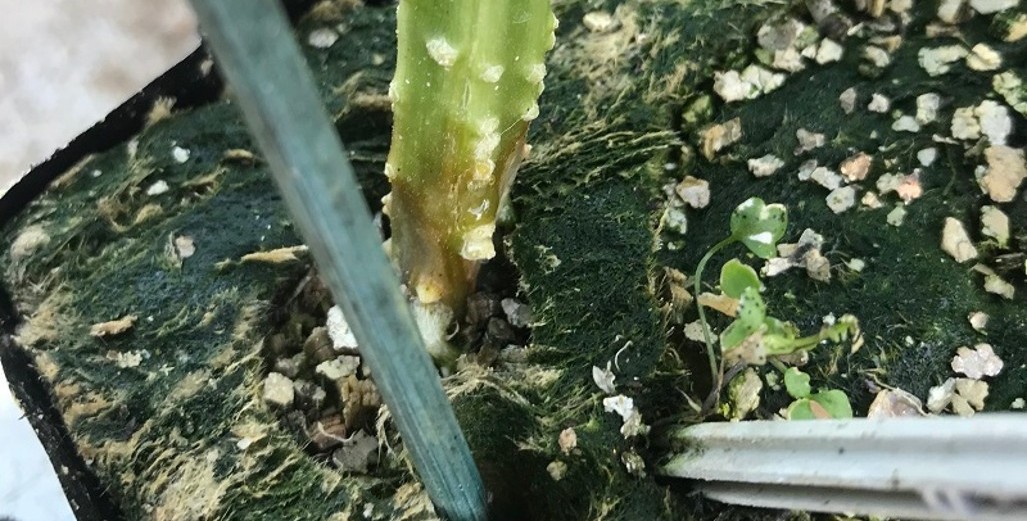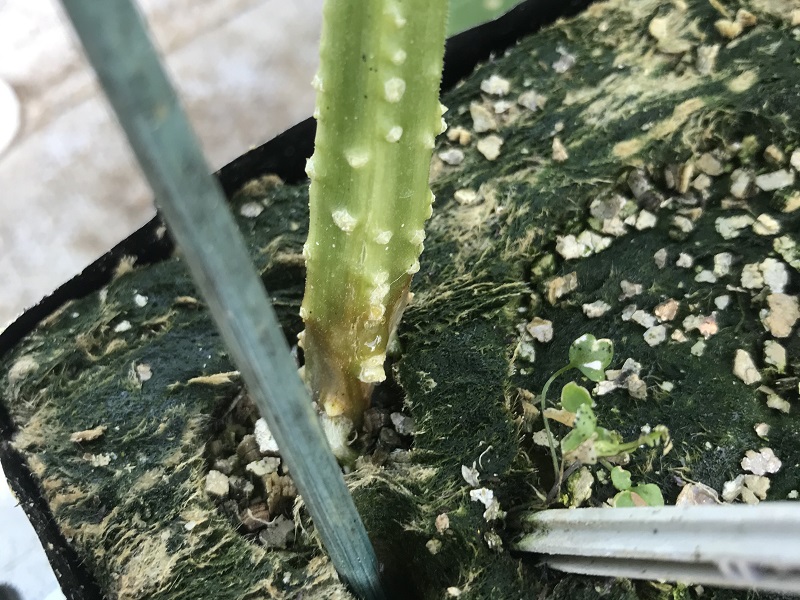Sign up here to subscribe to the Grower2grower Ezine. Every two weeks you will receive new articles, specific to the protected cropping industry, informing you of industry news and events straight to your inbox.
Jan 2020
Pythium Root Rot, January 2020

New Year Same Issue
I am concerned at how much Pythium root rot I am seeing and has been reported. Cucumber growers may be severely affected by Pythium root rot, which is a visible browning at the base of the stem (See picture). Chemical Fungicides are slowly being replaced by biological fungicides or ‘friendlier products”. Using biological controls, for all the best intensions, Pythium is still an ongoing issue no matter how big or small the problem is for different growers. Grafted cucumber trials continue to provide strong resistance to root diseases especially Pythium. However, as discussed in previous articles there is a cost and different growing technique required for grafted plants.
Sanitizing irrigation systems (using Hydrogen Peroxide based products liked HuwaSan) is a good option, as well as a very clean water source. One tip, that I have not mentioned before, is to not just sanitise the inside of your irrigation lines and drippers but physically dip your drippers/spikes into a hydrogen peroxide solution. It sounds like a lot of hard work but I do believe the spike of the dripper could be contaminating crops with Pythium from previous crops. There is a very fast turnaround with Cucumbers, from removing an old crop to replanting a new crop so possibly the sanitizing in-between could be improved.
I would like research for Pythium root rot controls to be conducted. I believe this will benefit growers at a time when excessive pressure is heaped upon them. Independent assessment into Pythium, may help growers understand, at different periods of the year and crop cycle how to better manage this potential crop killer.
Definition: Pythium survives over winter as oospores found in the soil. The pathogen therefore is easily spread with the movement of diseased plants, soil movement, surface water, or even from shoes. Pythium also causes "Damping off", "seed decay"
The Cost:
Despite all the best treatments/products available, Pythium still kills crops. In a time when costs are rising rapidly, our greenhouse factories need to be running at 100%, every lost plant is a lost opportunity to maximise production. A one percent loss, due to Pythium, during a cucumber crop cycle is significant, ten to twenty % is not uncommon and border line disaster. The cost per ha in lost revenue alone could be in the tens of thousands each crop cycle. The price tag attached to trying to cure the problem will be high, with limited results, the best option is prevention but as stated above we need a better understanding to tackle this issue.

This cover photo is also interesting for the weed growing next to the irrigation spike. Is this an indication of a seed or sporophyte that has travelled via the water source?
I appreciate your comments. Please feel free to comment on the grower2grower Facebook page:
https://www.facebook.com/StefanGrower2grower/
Article Written and compiled by Stefan Vogrincic, Consultant, Grower2Grower
Article Edited by Marie Vogrincic, Editor, Grower2Grower
CLASSIFIED
Subscribe to our E-Zine
More
From This Category

High-tech spy gear to uncover the secrets of Bumble bees in Tasmania

Cherry Production in New Zealand – Mike Nichols

Signify helps Agtira to bring locally grown cucumber to Swedish market
Dimmable Philips LED top-lighting fixtures support maximum efficiency and better use of energy

Plant & Food Research welcomes changes to gene technology regulations


























